Executive Summary
Apple Inc has a long history in terms of changes in products and management team. The company has grown to be the most valuable brand in the world today. Apple has created halo effect through its brand. Today, it has a community of brand loyalists who would rather line up to get their new products than wait.
Apple retail strategy is consistent with its brand message, which is quality products, at high-end locations with premium prices supported with both promotional messages and knowledgeable retailers.
Although competition remains fierce in the technology industry, Apple has managed to develop products for its high-end target market. Today, the company offers the best customer experience in both its online and brick-and-mortar stores.
History of the Company
Apple Inc was founded in the US as Apple Computer, Inc. The company has had a long history of key product development and launches, and changes in the executive management team.
Apple has grown to a multinational company that designs, develop, and sells mobile phones, personal computers, software, and other electronic products alongside related services. Apple has experienced a “significant growth since 2001 when it introduced its line of iPod and iPad products” (Berger, 2011). Today, Apple remains the most valuable brand in the world after ousting Coca-Cola (LeClaire, 2013).
What is the retailer’s mission statement?
In 2013, Apple Inc changed its mission statement. It reflects the company’s products rather than a mission statement.
“Apple designs Macs, the best personal computers in the world, along with OS X, iLife, iWork and professional software. Apple leads the digital music revolution with its iPods and iTunes online store. Apple has reinvented the mobile phone with its revolutionary iPhone and App Store, and is defining the future of mobile media and computing devices with iPad” (Apple Inc, 2013)
How long have they been in business and how has their business changed over the years?
Apple Inc has been in business since 1976, and it has experienced changes in terms of product development, leadership, and growth. Here are brief key changes in Apple over the years (Berger, 2011).
1976: Steve Jobs, Ronald Wayne, and Steve Wozniak launch Apple to sell personal computers.

1980: Apple becomes “a public company with 4.6 million shares” (Berger, 2011). The company introduces “Apple III to compete with Microsoft and IBM, but it was a disappointment” (Berger, 2011).

1982: Apple achieves annual revenue of $1 billion in sales.
1984: the company launches Macintosh, Steve Jobs’ project
1990s: mismanagement sets in at Apple and business competitive conditions change dramatically
1997: Amelio quits as the CEO and Jobs becomes the interim CEO. This sets the pace for recovery
2000: Apple introduces PowerMac Cube. Jobs confirmed as the company’s CEO
2001: Apple introduces iPod and OS X.
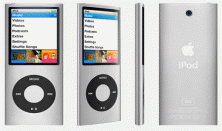
2002: Apple introduces iMac G4 and opens global retail outlets
2003: Jobs undergoes surgery for a pancreatic cancer
2004: Apple launches iTune store
2005: the company introduces iPod video and Nano and downloads from iTune surpasses 500 million
2006: the company introduces iMac Core Duo and Disney acquires Pixar. Apple removes most of the previous products and introduces MacBook, Mac Pro, and MacBook Pro. Apple share price surges tenfold to more than $80 per share.
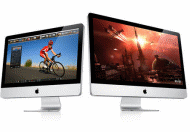
2008: Apple unveils App Store, and users could use their iPod or iPhone to download the apps. The company introduces MacBook Air.
2009: Steve Jobs takes a medical leave from the company, undergoes liver transplant, and returns to the company in the same period. The company also introduces iPhone 3GS and sales surge.

2010: the company introduces a new iPad and claims over 80 percent of the market share
2011: iPhone becomes available via Verizon and Jobs’ prolongs his medical leave. The company launches new iPad and iPhone with sophisticated, inventive qualities and appealing designs. Sales increase within the first week of the launch
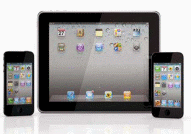
2012: Tim Cooks takes Jobs’ roles during his medical leave. The company introduces the new iPhone 5. Critics question whether Apple would be the same without its visionary and innovative founder.
2013: Apple launches new versions of iPhones, iPhone 5c, and iPhone 5s.

Target Market
Apple never discusses its target market openly. However, it is obvious that the company’s high prices show that it cannot make products for all segments of the market. One can identify users of Apple products and describe the target markets and their demographic and psychographic characteristics as follow
Teenagers
The company targets teenagers with its sleek iPods. Teenagers can use the device for socialisation, listen to music, and visit online social media. Moreover, Apple’s products have several games that appeal to teenagers. In fact, teenagers have developed such trends with Apple products.

College and University students
Apple targets “students with its MacBook and Mac Pro” (Apple Inc, 2013). In fact, the company claims that, “it transforms the way students learn and teachers teach” (Apple Inc, 2013).
Moreover, there are students and teachers who use iPad and iPhones for recording their lecture notes. These products have specific apps, which facilitate learning.

Business community
Most business people find sleek designs of Apple products to be intriguing. They like qualities of iPads, iPhones, MacBooks, and others. These are devices, which enhance efficiency because of their advanced features. They solve problems among business people through ease of communicating, organising, and sharing of documents.

Children
Children like the touch screen of Apple products. This makes the products easy to use. Moreover, it is simple to download children’s games from App stores using these devices.

Adults
Adults are also a target market for Apple products. For instance, they have found iPhones to be useful for making phone calls, finding directions, keeping documents, taking photos, and connecting to the Internet. Moreover, these devices are small to carry when moving.
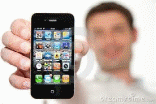
Hence, one can conclude that Apple products target consumers of all ages, but not all consumers from different economic backgrounds. The product may only attract affluent and middle class consumers. Nevertheless, Apple has created a brand cult or a community from these consumers, who line up to be the first to own new Apple products.
A focus on target markets enable Apple to develop and sell unified product solutions that meet the needs of specific users. In this regard, Apple has based its target market on specific needs rather than try to sale to all consumers. The company builds products with features that appeal to a given segment of the market.
For instance, Apple reinvents its successful products with users in mind. This explains how the company has upgraded the iOS, iPhones, iPod Touch, and Mac. This is not a strategy to support the desired product prices that Apple needs but rather to meet the target market demands.
However, this does not mean that Apple is always right on its target market strategy. Overall, the company does not release products haphazardly but rather in a calculated move as its hallmark of effective target market strategy.
The retailer’s market positioning
One can comprehend Apple’s market positioning strategies by focusing on the essential principles of marketing, the 4Ps.
Price
Apple has priced its products as premium. The company has the highest prices in the market today. The pricing strategy helps Apple to evade price wars in the electronic business. Hence, it has focused to compete on innovation and features rather than on price.
Apple derives huge profit margins without effects on its brand because it is the most valuable brand in the world today (LeClaire, 2013). The company has no price discounts.
Products
Apple sells the best products in the market, including iPhones, iPads, iPods, and iMac, and Mac among others. The company does not degrade product qualities, features, and performances. However, this does not mean Apple’s products are perfect. Instead, the company or users can notice a problem, and Apple moves promptly to correct it.
The company has often delayed product shipment in order to ensure their qualities. This positioning strategy has helped Apple to build trust among Apple consumers. Hence, the company has matched quality products with premium prices, and customers queue for such quality products irrespective of their prices.
The company also offers few variants and choices for consumers. In 2013, Apple introduced several colourful iPhones 5s and 5c for people who preferred varieties of colours, including gold. Other products are only available in black and white colours, which make it simple for consumers to purchases Apple products.
Moreover, the company has developed unique products to eliminate the need for substitute products. For instance, users who switch to other competing brands normally switch back to Apple products due to lack of positive user experiences. Hence, one can only substitute one Apple product for another Apple product or upgrade.
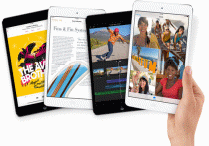
Place
While many technology firms went for online stores, Apple moved in the opposite direction and established brick-and-mortar stores across the world. During this period, many competitors such as Dell closed their retail outlets in order to established online stores (Thomke and Feinberg, 2009).
Apple selectively and discriminately chooses its retail outlets and partners. The company requires all partners to meet specific demands on product display and placement.
All Apple stores are boutiques in designs, which aim to provide maximum customer experience. All Apple stores are only found in affluent retail places, which support its product quality and premium prices.

Promotion
The company established its promotional strategy in 1984 by using the super bowl advertisement, which remains an iconic advertisement in its history. Today, iPhones advertisements are thrilling to differentiate the company from its competitors.
The company does not offer any discounts in promotion. Instead, Apple uses product scarcity to promote its valuable products. Hence, customers can pre-order Apple products before the launch dates.
The use of 4Ps has allowed Apple to develop its brand and strategic market positioning.
One would also emphasise knowledgeable staff at Apple’s stores worldwide. The company claims that people should only buy the product from a knowledgeable team who would help with it.

Branding
Over the years, the company has established a strong brand and reputation in the PC market and lately in the smart device markets. The company’s brand falls among the most expensive brands today. Users and critics know Apple for “innovation, design, quality, and being different in terms of products and services” (Thomke and Feinberg, 2009).
The company has claimed that it would not be possible to make low priced products if they were not junks. Hence, it can only concentrate on top-notch quality products to protect its market share and brand reputation.
Innovation at Apple protects its high prices. This is a strategy of giving customer confidence that the product will solve their problems and meet their expectations.
Customers believe that such expensive products are the best. This is a typical psychology reaction of any consumers to high prices and relations with quality. Hence, if Apple starts developing low priced iPhones and other products for the mass markets, it would mean that the products are junks and would hurt its brand.
Dell lost its position as a market leader by manufacturing PC for the mass market.
Today, Apple has also positioned itself as an online retailer.
Positioning
The company has positioned itself as a manufacturer of lifestyle products for the high-end markets. The products target the working middle class and professionals. Majorities yearn for Apple products, but cannot simply manage to pay for them.
The premium pricing strategy allows the company to survive economic changes, such as inflation, economic downturns, and changes in exchange rates. People who can afford the company’s products are not interested in prices because products will solve their immediate challenges.
Today, Apple still maintains its high prices, but many people can buy them as changes in incomes increase among the middle class.
Competitors or Sustainable competitive advantage
Not all decisions that Apple makes are correct or successful. However, competitors in the industry have made some serious mistakes that have favoured Apple over the years. Apple competes with Dell, Microsoft, Nokia, Samsung, Lenovo, and other manufacturers of smart devices.
However, failures of competitors’ products have helped Apple to take their market share. For instance, Microsoft Vista was a failure, several fragmented versions of Android, Windows vulnerabilities to threats, and Symbian OS limitations have facilitated the growth of Apple.
The company invited developers to create various apps for its millions of users globally. Apple captured the music market share through iTunes. Today, it has focused on the cloud market through iCloud.
Apple must adopt some business level strategies, which will make it remain competitive and increase customer demands (Porter, 1998). In this case, it must continually increase and expand product and services innovation, introductions, and transitions.
Apple must constantly introduce “new products, services and technologies, enhance existing products and services, and effectively stimulate customer demands for new and upgraded products” (Apple Inc, 2012). This must account for timely introduction of new products in the market because of rapidly evolving technologies. However, Apple must observe that it will be difficult to determine reactions of users against its new products and services.
Apple must review its pricing strategy because of short life of its products, changes in technologies, and fierce competitions.
The company must continually invest in R&D, new technologies and apps in order to keep up with customer demands and competitions. This will ensure that Apple can compete successfully in the global marketplace.
Apple must also embark on aggressive acquisition. This will assist the company in retaining patent rights and acquiring new technologies. In addition, it is an effective method of ensuring constant supplies of components without price and shortages challenges.
Apple must also develop its workforce. The company has premium products with multiple features and capabilities.
It can only rely on knowledgeable workforce to market such products to different consumers in various parts of the world. This shall enhance customer experiences and support services. Direct contacts with customers would ensure that customers have the best experience of Apple.
Apple Inc SWOT analysis
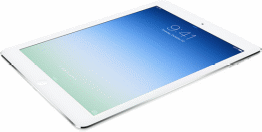
Economic factors
Apple operates in an industry that is prone to rapid technological advances. Therefore, the company must develop its R&D department to ensure constant and timely release of new products, services, and technologies in the global market.
Apple must develop new technologies and improve current products through R&D. It should also obtain license of patents, acquire new businesses and technologies for growth.
Marketplaces of smart devices have become highly competitive. Consequently, Apple needs to maximize sales from a single consumer. The company must focus on different modes of distribution in order to reach many segments of the market.
These may include online, direct sales, wholesales, retail stores, and third party outlets. In addition, they must offer value added services and products to consumers. Apple also requires knowledgeable salespeople for its unique brand. These people must be able to show various functionalities and capabilities of Apple products.
Apple must develop its own distribution, retail, and support centres globally. This approach will allow it to provide high quality services, and buyer experiences to customers.
The company has superior products. However, Apple must continuously develop new products to strengthen its financial position and revenues. The current and potential competitors of Apple have resources, which can allow them to offer some products and services at low costs or at no cost all.
Supplies of components from multiple sources present price and industry shortages to Apple. The company must continue to work on acquiring new contracts with suppliers in order to avert price and shortage challenges.
Apple also experiences several lawsuits related to patents. The company must constantly file for patent rights in order to protect itself from potential claims from other parties. Apple must also acquire adequate time for its patents.
In the global marketplace, Apple must improve its products and review prices in order to cater for various segments of the market.
Environmental factors
Apple has committed to the highest standards of ethical responsibilities with regard to social and environmental matters in all locations in which it sales and manufacture products. The company aims to maintain the integrity of its business and brand.
Therefore, it ensures that all suppliers and dealers adhere to sets of rules under social and ethical responsibilities. This has worked well for Apple because it does not experience environmental and ethical challenges in its areas of operations. This is the case at Foxconn, Apple’s leading supplier.
Apple is now a member of Fair Labour Association (FLA) because of effective and fair work conditions. For instance, FLA conducted an audit in Foxconn factories, which was a comprehensive exercise. The company worked with FLA in order to implement recommendations from the audit. Consequently, Foxconn has implemented several recommendations prior to due dates.
Apple believes in energy efficiency through its products. It has developed Macbook’s battery to last long before replacement. Moreover, it has recycling plan across major locations in which it operates. Thus, the company has reduced carbon emission and reduced amount of waste materials from its products.
E-business strategy
Apple has embraced e-business strategy. Customers can make online purchases and receive free shipping and returns for orders over $50 (Apple Inc, 2013). Customers can make online purchase right from the iPhones.
Retail Market Strategy
Retail format
Apple’s retail stores are consistent with product quality and premium prices. All Apple retailers must design their stores to meet the company standards in product display and placement.
Location strategy in the marketplaces
All Apple stores are located in high-end locations of developed nations and emerging economies (LaVallee, 2009). Moreover, the company strategically opens its stores globally (Dediu, 2013).
Apple refers to its retail outlets as ‘significant stores’ while others consider them as flagship stores.
The stores occupy premium and high-traffic locations, which customers can easily access. Another significant feature is that Apple store must be in eye-catching buildings (LaVallee, 2009).
Significant stores have been the most successful Apple’s strategy in a competitive market environment. This is the major branding strategy of Apple. The company has services like the “Genius Bar, where staff can help field product-related questions and encourage customers to keep coming back even after the initial purchase” (LaVallee, 2009).
Apple designs its stores to accommodate many consumers. For instance, they are usually over 6,000 square feet and expects over millions of visitors in each stores every year, which should generate substantial revenues (Paczkowski, 2012).
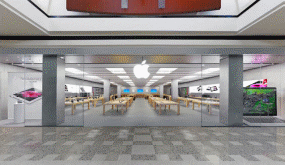
Retail Mix
Apple manufactures and sells only quality products in its premium outlets. All products have significant market following all over the globe.
One can find new products, as well as quality refurbished Apple products.
Pricing Strategy
Apple’s pricing strategy supports other elements of the 4Ps. For instance, the premium pricing strategy supports high-traffic locations in upper class locations, quality products, and promotional strategy without discounts.
Level of Customer Service
Apple tells its customers to products from people who know it best, can help with the set up, demonstrate all features, and improve user experience with products. Moreover, customers can make reservation online and visit the store later.
The company uses these strategies to retain its customers and attract new ones. Apple retailers are knowledgeable in products. Hence, they create exceptional customer experiences in Apple stores.
CRM or Customer loyalty programme
Apple has a Genius Bar, workshops, and joint ventures. Customers can make online reservations and visit stores of their choices. This is a loyalty programme, which Apple uses to retain both its individual consumers and business consumers.
The company claims that its retail stores are more than just stores. Customers can learn about their products through free workshops, which involve basic lessons about product features and development of user skills. For instance, customers who purchase Mac can sign up for One to One training for skill development and product discovery.
These are free hour-long programmes for youths, kids, and business community who want to understand their smart devices and increase their user skills.


Apple’s customer loyalty programme is effective for all different target markets. The programme allows customers to make online reservations on their preferred programmes and visits stores at their convenience. Hence, the company is able to provide flexibility that many consumers require in their busy schedules. Face-to-face interaction is one major advantage of Apple’s retail store strategy.
One to One programme meets customer’s unique skill requirements or knowledge gap. The company creates “a curriculum to meet customer’s goals, experiences, and learning style” (Apple Inc, 2013).
One major drawback of One to One service is that customers must pay a fee of $99 (Apple Inc, 2013). Overall, no other competitor matches Apple’s customer management programmes.
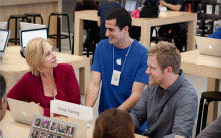
Communication Mix
Sales promotion
Apple promotes its products as scarce products. In fact, it displays the number of available merchandise on its online retail stores and does not display several products in its brick-and-mortar stores. Customers buy immediately due to fears of losing a chance to own the product soonest and delays associated with shipment.
Product scarcity is an incentive to buy Apple product. Apple’s promotions lack discounts, but it offers only gift cards (Mogg, 2013).
Personal selling
During the product launch, Apple’s CEO does personal selling. The company uses the same strategy in its both online and brick-and-mortar stores.
Internet
Apple uses Web PR to relate with its customers. Users can open their Apple online accounts for direct communication with the company. Apple’s Website has all products, their features, and respective prices.
Advertising
The company advertises its products through the media to reach new consumers.

Public relations
Apple engages in Kid’s Summer Camp as a form of public relations while the online tools provide the required publicity for the company.
All these communication mix strategies are consistent in both on online stores and in brick-and-mortar stores and across the globe in other distribution channels (Paczkowski, 2012).
Store and Website
Apple’s retail stores (significant stores) have proved to be successful because they attract millions of consumers every year. Still, the online retail stores allow customers to browse for products and make their online purchases with free delivery.
Both strategies are effective for retail marketing strategies because consumers are still online, as well as in brick-and-mortar stores, and Apple offers services that meet customers’ needs through both outlets.
Recommendations
Future retail strategy for Apple
Retail market becomes competitive as other firms introduce low-priced smart devices. This price has forced Apple to reconsider the prices of iPhones, but the company has not met the mass market expectation.
Pricing strategy can help Apple to unlock new markets and grow its revenues. Today, many potential customers wish to own a piece of smart device from Apple, but they cannot due to high prices.
Apple will continue to be innovative and launch products, which meet customers’ expectations. The company must continue to rely on its combination of quality products, unique designs, strong marketing mix, customer experience, effective retail strategy, and premium pricing in order to retain and gain retail market share.
References
Apple Inc. (2013). Apple Inc. Web.
Apple Inc. (2012). Form 10-K: Annual Report 2012. Web.
Berger, M. (2011). An illustrated history of Apple’s products and executives. Web.
Dediu, H. (2013). Apple’s International Retail Strategy. Web.
LaVallee, A. (2009). Apple’s ‘Significant Store’ Strategy. Web.
LeClaire, J. (2013). Apple Ousts Coke as Most Valuable Brand. Web.
Mogg, T. (2013). Apple to launch new iPhone retail strategy to boost sales at its brick- and-mortar stores. Web.
Paczkowski, J. (2012). Breaking Down Apple’s Retail Distribution Strategy. Web.
Porter, M. E. (1998). Competitive Advantage: Creating and Sustaining Superior Performance: New Introduction. New York: Simon and Schuster.
Thomke, S. H., and Feinberg, B. (2009). Design Thinking and Innovation at Apple. Web.